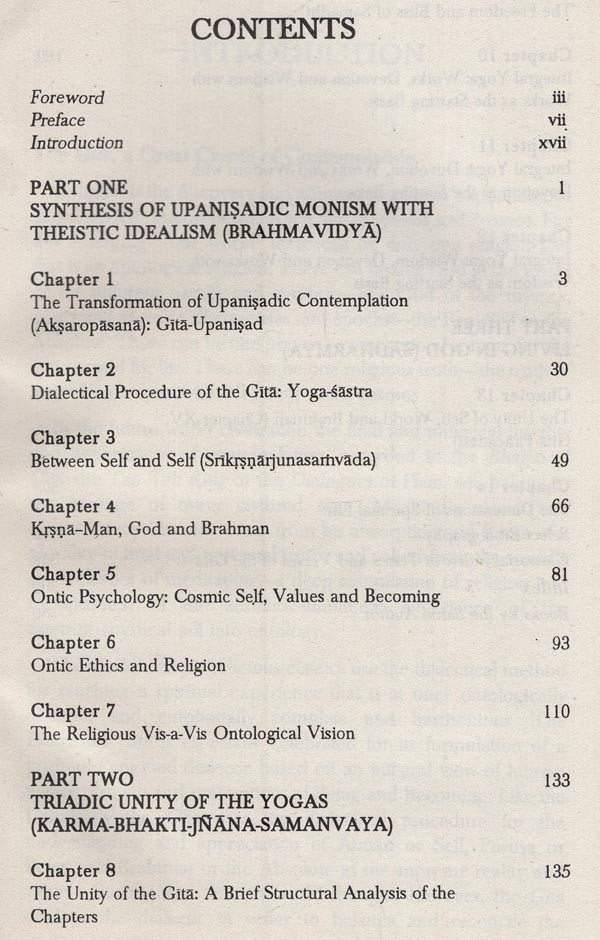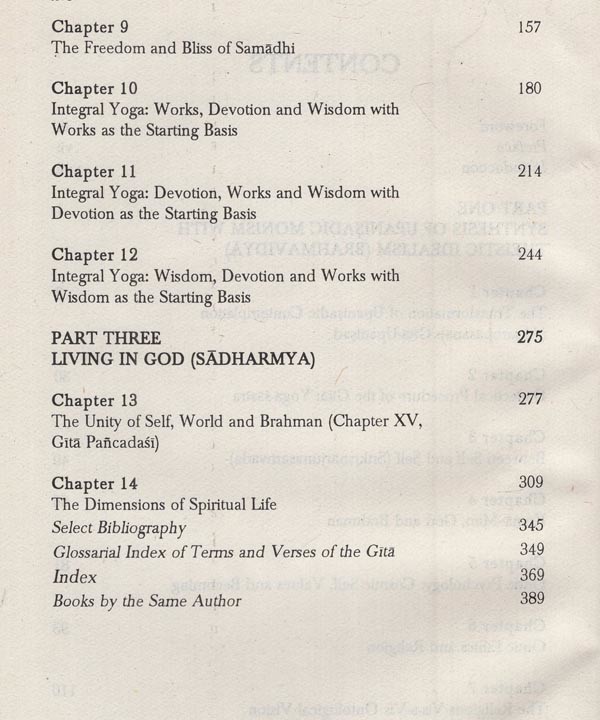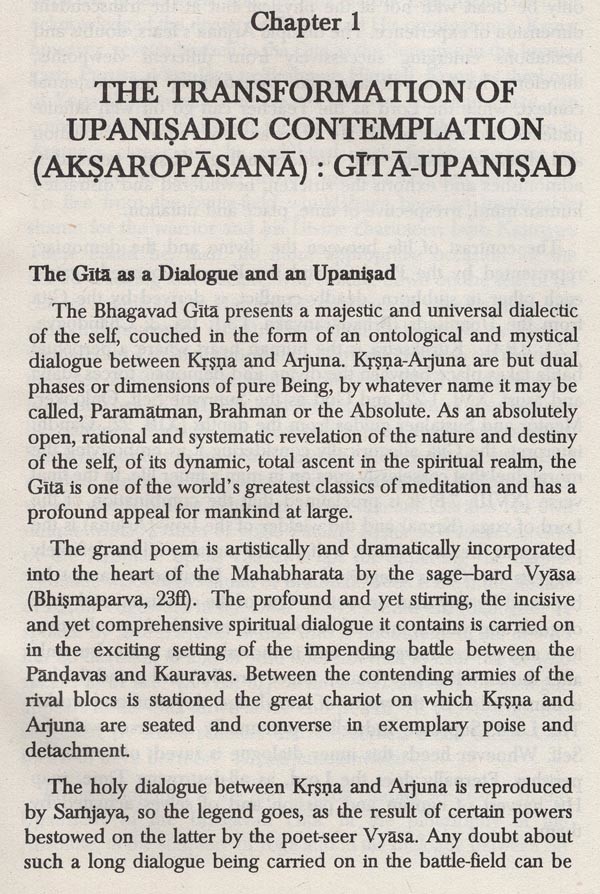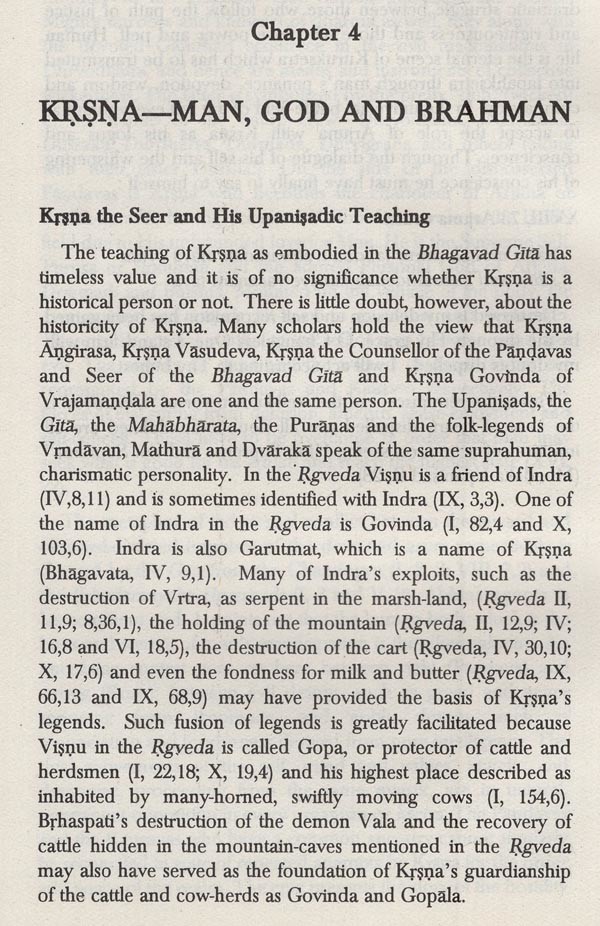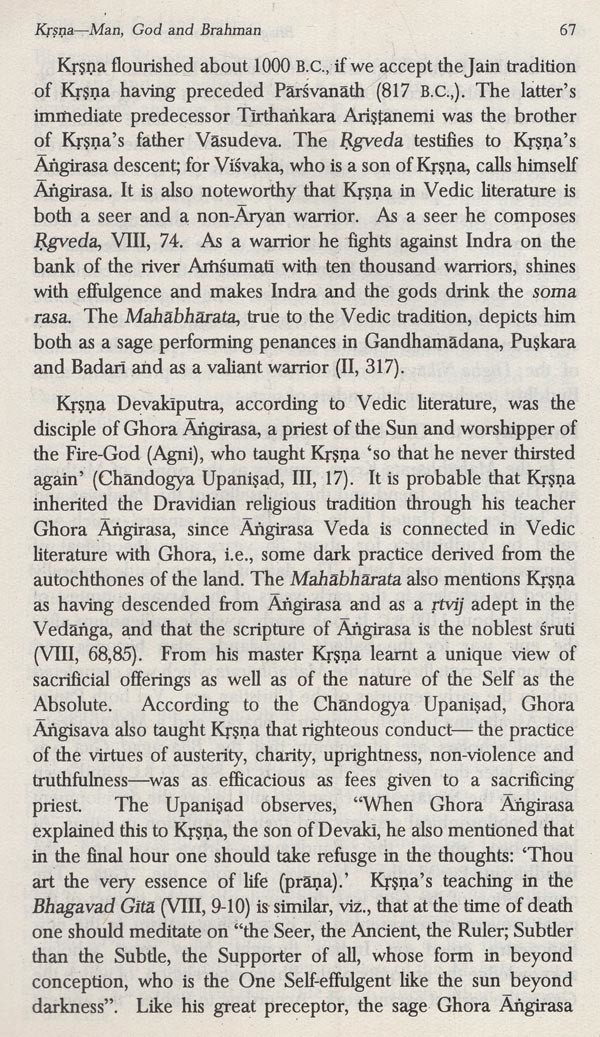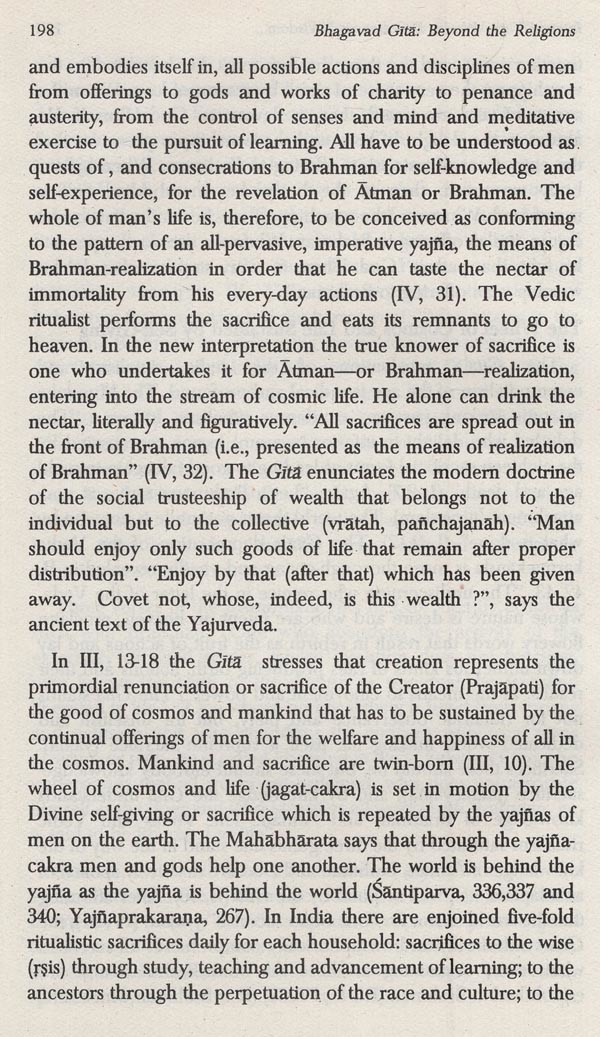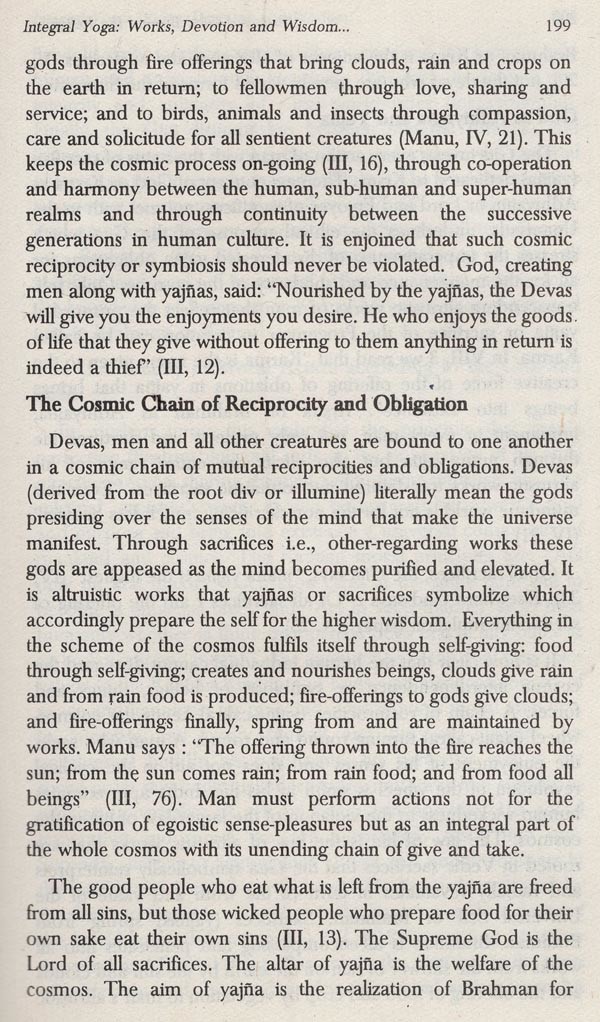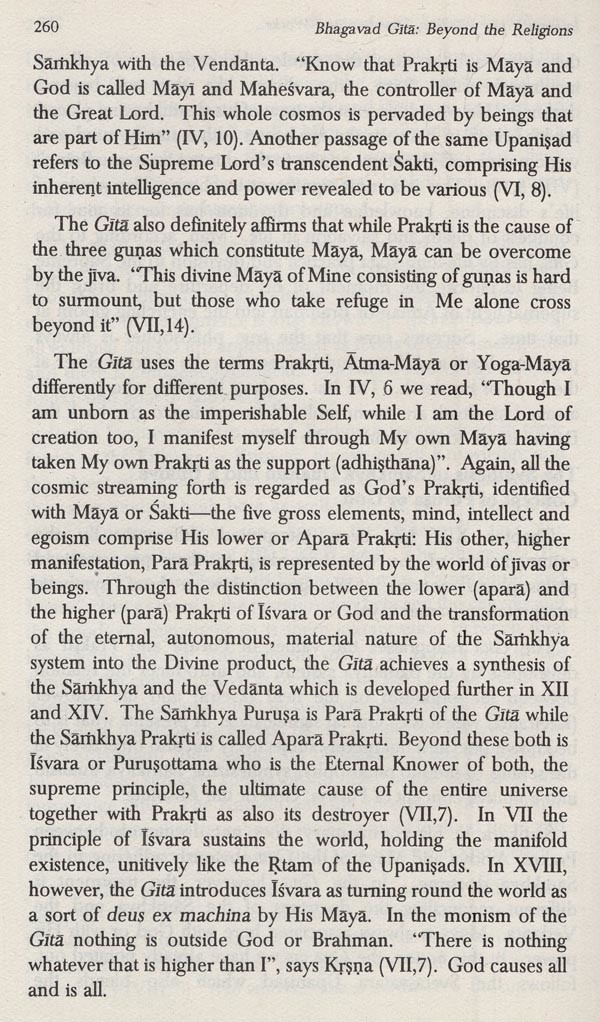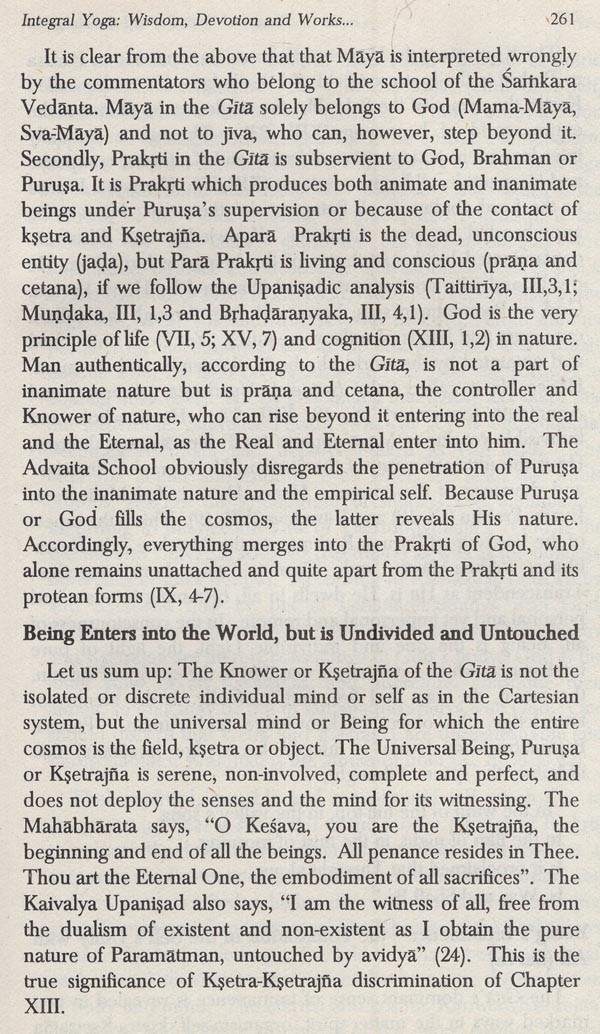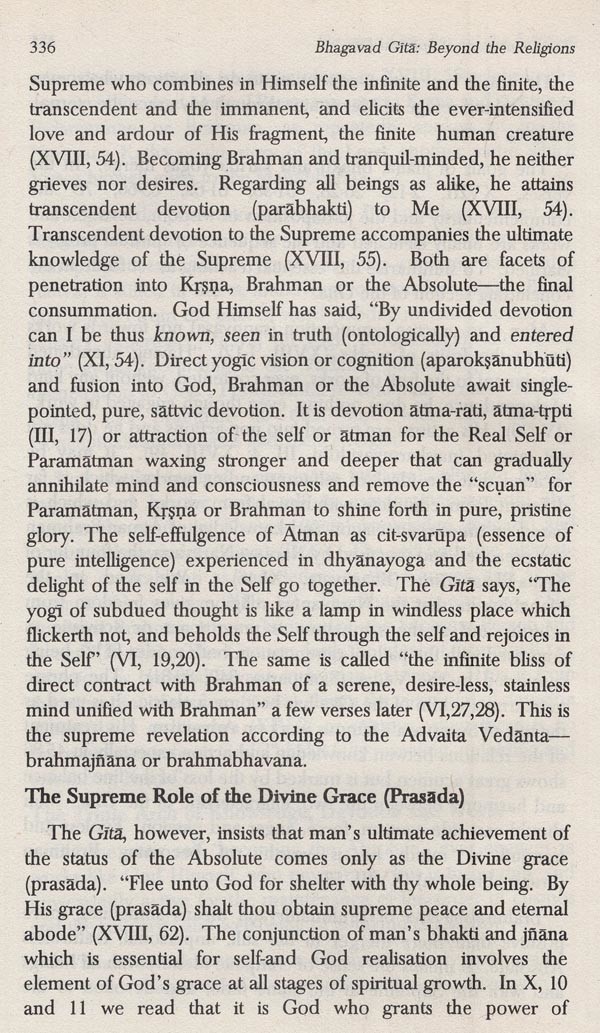About the Book This book Bhagavad Gita-Beyond the Religions, one of India's most celebrated classics of contemplation has some new features. First, instead of a dialogue, between Krishna and Arjuna, it actually is a trialouge of the self in communion with the other-self, with the Universal Other, Brahman or All which is "in between", a phrase so aptly used by Martin Buber. Secondly, the yoga of the Gita is interpreted as dialectical procedure. The Gita dialectic not only clarifies the Upanishad notions of the Absolute but also fundamentally contributes towards the synthesis of the great antinomy ways of dhyana, karma, bhakti and jnana. Whereas many classical commentators of the past interpreted the doctrines of the Gita as a moksa-sastra, neglecting its character as a Yoga-sastra or philosophy of dialectical procedure laying down the practical way of achieving emancipation through a synthesis of the rious approaches various apron to spiritual development and also to suit the various Darsanas or philosophical systems to which they belong. Thirdly, in this volume appropriate quotations from both ancient and modern sources of religion, East & West, have been included. These show that the Gita represents neither Hinduism nor a sect of Hinduism, nor, again, an Eastern yoga, but a universal philo sophical religion that crosses the boundaries of creed and civilization. Its synthetic and universal yoga achieving an integration of ontology, religion and ethics, is of profound significance for modern. religious thought. This most ancient classic of contemplation has a patent relevance for the tired, anxious and disillusioned world of the present.
About the Authors Radhakamal Makerjee (1889-1968) has been one of the few multidisci plinarians of our age who wrote with equal case, originality and authority on a large variety of areas including economics, sociology, ecology, mankind, democracy, civilization, art, psychology, personality. population, values, morals, philosophy, evolution and mysticism. He authored about fifty books on various subjects.
He was Professor and Head of the Department of Economics and Sociology from 1921-51 in Lucknow University and later on Vice-Chancellor in the same university for some time. He was invited to deliver lectures in many Indian Universities and also abroad including U.K., Europe, U.S.A., and U.S.S.R. He was member of many voluntary organisations, government committees including some international bodies. Besides being a renowned scholar, eminent social worker who helped in the organization of adult education classes, co-operatives and various other welfare activities throughout his life, he was a great mystic. He regularly devoted few hours to yoga and meditation before dawn and during the last few years of his life he used to hold regular fortnightly classes on Bhagavad Gita, which were attended by his disciples and other devotees. Besides Bhagavad Gita, some of his earlier writings on this subject are the Theory and Art of Mysticism (1938), Lord of the Autumn Moon (1957) and Astavakra: The Song of the Self-Supreme (Astavakragita) (1971). One of the American Reviewer has considered him to have written some of the most important works of our century. Another American Professor has remarked that R.M. was one of the most gifted of the human minds of our time which has worked in the social sciences and through these sciences to a philosophy of social science and human life.
Foreword Mogavad Cina is one of the most important ancient classical wks of India which has attracted the silention of many sam dscholars all over the world It has inspired some of them to we commentaries on its various aspects There are at present 132 editions of the Gua in different languages spoken in various countries of the world. It was translated into the vernacular in Java as early as in the 10th century AD, while its first translation into English appeared in 1785. In India taking clue from three ancient authoritative texts ie., Bhagavad Gita, Upanisads and Brahmasutras (of Badarayana) in Sanskrit Literature, many Vedantic philosophy sprung up and commentators both saints and scholars have given different interpretation of schools dese sacred works to suit their own inclination.
Among the classical commentators the earliest is Sankara (788 826 A.D.) who laid the foundation of Advaita School of the Vedanta philosophy. The main schools of Vedanta philosophy are Advaita (of Sankara), Visistadvaita of (Ramanuja), Dvaita (of Madhava) and Suddhadvaita (of Vallabhachari). The last three schools are of Visnuites. Beside these three, there are four minor schools of Visnuites i.e., of Nimbarka, Bhaskara, Yadavaprakasa and Chaitanya who have also taken their cue from Bhagavad Ga. According to Sankara the Brahman alone exists. The world which appears to exist does not really exist. Owing to the screen of Maya, the Brahman's real nature is not understood and, therefore, the world is found to exist. Existence, consciousness and bliss are not the attributes of the Brahman. They are identical with it. The Brahman has no quality. It is nirguna. This school admits the reality of the world till this truth of monism is realized. There is identity established between the soul and the Brahman. This experience of identity could be had during one's life time and this stage is called Jivan-mukti. Only by following the path of knowledge one could get the final release.
Preface Professor Radhakamal Mukerjee before death in August, 1008. Unfortunately, book alongwith some other books The Way Human Humanism, The Mulu Dimensional Man, (1) Astavakra and (4) The Society: Noctelles, mentioned pages 301 under the other Books the same author and Autobiography (somewhat incomplete) could not be published his our knowledge, out the four books mentioned above, two have been published under the same with modification Le, The Way Humanism; East and West (1064) Astavakra The Song of Self Supreme (Astavakragita) (1971) remaining two others under different Le, Fundamental Unity India (1977) and Society and Community (1979). But Bhagavad Gita and his Autobiography were left unpublished, However, these books now coming out about decades due to certain reasons. Mukerjee had desired in Will that all books his personal library including the manuscripts should go to the Tagore Library. Lucknow University. The complete manuscripts of and loose were taken possession by the Lucknow Branch the State Bank India directed in his Tagore Library of the Lucknow University formed committee bring the manuscripts from bank concerned. However, the committee members could not succeed their mission. then offered services to Library this work and after many visits the Bank, we could bring all manuscripts and other important papers to Library the end of 1981.
Introduction Great Classic of Contemplation discovery and affirmation man's spontaneous rapport between and other-self and cosmos. For emerging 'one there can only one religion and ontological religion. can one God in the world different and symbols-the mystics, sages all countries and epochs-the Real then There one prayer-compassion the There can one religious truth-the truth of oneness All-Being-and cosmos.
future world civilization universal experiences contemplation, recorded in the Bhagavad Tao The King the Dialogues will belong to heritage every civilized man. Mankind's moral and can only come from absorption fusion final and universal and values the world's classics meditation deep assimilation of religion into aesthetic-intuitional experience the mystical into ontology.
religious classics the method a spiritual experience that at once ontologically and emotionally complete harmonious. The Gita especially celebrated for formulation spiritual dialectic based integral view of human growth maturation, of Being and Becoming.
**Contents and Sample Pages**

